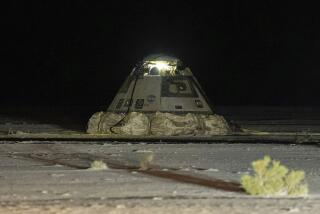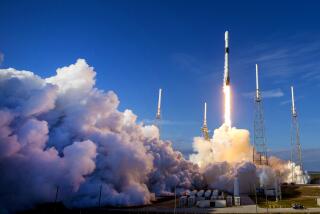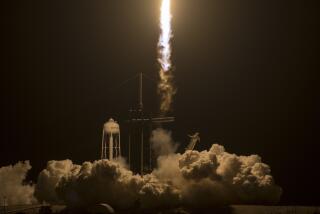Terrible Truth
- Share via
For a quarter-century the world has been invited to witness the testing and the recurrent triumphs of the American manned space program. Now, before the shocked eyes of the world, that program has suffered its greatest tragedy. In the clear and bright morning sky off the Florida coast the space shuttle Challenger, little more than a minute into its planned six-day mission, disappeared in a monstrous fireball when the huge rockets that were thrusting it aloft suddenly and inexplicably exploded. It is almost certain that the spacecraft’s crew of seven perished instantly. In that moment an always-dreaded possibility became a terrible reality.
And in that moment the truth that had become half-buried by a long and almost routine run of American space successes was stunningly and agonizingly recalled. That truth is this: In the technology of space exploration the potential for disaster is inherent and unavoidable.
It is inherent in the machinery and the chemicals that have been brought together to break the gravitational grip of the Earth so that space can be penetrated. When all the tens of thousands of parts of the launch vehicle and the spacecraft work as planned, when the massive volume of propellant fuel burns as it should, then a safe and smooth journey into space can be expected. But let something go wrong and the fuel that had seconds before been a manageable source of power can be transformed into an uncontrollable bomb. When that happens there is simply no escape for the spacecraft and those in it.
The risks of things going wrong despite the most rigorous efforts to make them go right are fully understood by all who participate in the space program. The risks impose a special caution, but they do not deter. Brave and venturesome men and women continue to volunteer for the astronaut program, seeking to share what only a very few of the Earth’s billions have been privileged to experience. The seven Challenger astronauts who died as they sped toward the silence and weightlessness of outer space accepted danger because they delighted in what they were doing. Others will set out in time to complete the journey that was left unfinished, and many journeys after. The nation should understand that the risks they face will be no less than those that confronted the crew of the Challenger. The possibility of tragedy will remain inherent in the space program. It has occurred and it may well recur, however great the courage of the men and women who fly, or the technical skills of those who plan their missions.
More to Read
Sign up for Essential California
The most important California stories and recommendations in your inbox every morning.
You may occasionally receive promotional content from the Los Angeles Times.










